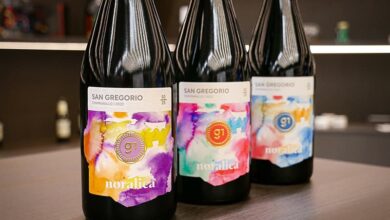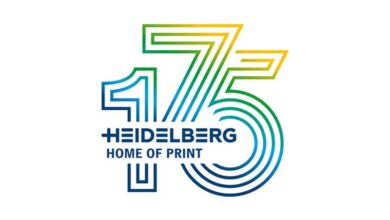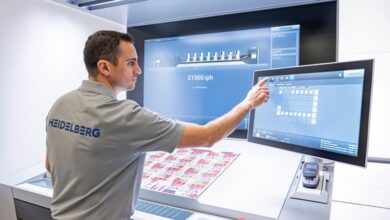Heidelberg Reveals drupa Highlights
Heidelberg will be presenting the next stage in automated print media production at drupa 2016, which is taking place from May 31 to June 10 in Düsseldorf. By continuing to digitize processes throughout the value-added chain of media service providers, the company is significantly improving customer loyalty while also making a major contribution to the sector’s further industrialization.
The main innovations relate to the integration of offset and digital printing in a single workflow, further automation of all production processes, integration of commercial processes, and involvement of print buyers in the workflow.
“As in other sectors, the digitization of key processes is progressing rapidly in the print media industry. Thanks to its Prinect print and media workflow, Heidelberg is able to play a leading role in shaping this process so as to ensure enhanced customer benefits,” says Stephan Plenz, Member of the Management Board responsible for Heidelberg Equipment. “Smart integration is the term we use to describe the essential requirement for becoming a Smart Printshop. What that means is not only greatly simplifying communication between media service providers and their customers, but also making order processing far easier and far more profitable.”
The further expansion of digital printing operations is one of the company’s key strategic goals. A major milestone in this respect is the new optional digital front end (DFE) that Heidelberg unveiled in spring 2015, which enables integration of Linoprint digital printing systems with Speedmaster presses in a print shop’s overall workflow.
Heidelberg is now planning to offer the DFE to other digital print manufacturers. Users will then benefit from also being able to incorporate the digital printing systems of third-party suppliers into their Prinect workflow.
In time for the upcoming drupa, Prinect Smart Automation will support the fully automated processing of a far wider range of print products. Information about product type and quantity will be read out autonomously and adding the files to be printed will start production fully automatically – all the way through to automatic layout creation. What’s more, Prinect Smart Automation will read out information directly from the data to be printed. This can be used, for example, to control proofer selection in the automated process.
A growing number of customer inquiries, ever shorter print runs, and possibly smaller mar-gins mean that print shops need to significantly reduce the amount of work involved in completing individual customer projects. The new Speed Estimator, which forms part of the Prinect Business Manager MIS solution, now makes this far easier thanks to fully automatic costing of the entire production concept, the layout, and the outlay for standard products. The products requested are defined in a matter of seconds in a user-friendly, browser-based input mask in the new Prinect portal.
The new Prinect Portal, which will be available from drupa 2016 onward, facilitates communication between customers and service providers. Print shops give their customers personalized online access and the relevant authorizations can be customized. This is intended to make the Prinect Portal the standard tool for completing all key steps in the workflow – from customer inquiry and quotation costing to production, delivery, invoicing, and evaluation.
The Prinect Portal is structured so as to enable the future transfer of further functions and tasks from software that was previously managed locally to the browser-based tool, thereby opening up completely new ways for print shops and their customers to work together easily.
The new Prinect Web Shop is a software-as-a-service solution from Heidelberg and aug-ments the Prinect portfolio for incorporating media service provider customers into the workflow. The new web shop also forms a fully integral part of Prinect, which ensures auto-matic exchange of all necessary information between shop, MIS, and production system.
Heidelberg also ensures intelligent integration of key production processes in packaging printing. From the upcoming drupa onward, integration of the Prinect Package Designer CAD software will enable packaging printers to fully automate the creation of standard designs such as ECMA and FEFCO and customer designs.
The physical properties of paper represent a particular challenge in offset printing. During the printing process, mechanical influences affect the extent to which print sheets stretch. The larger the sheet format and the higher the number of printing units being used, the more pronounced the effect is. Unless steps are taken to compensate for this, register inaccuracies occur and the print result is highly unsatisfactory. Existing compensation processes are complex. Heidelberg already offers the paper stretch compensation function for Speedmaster presses.

.gif)



